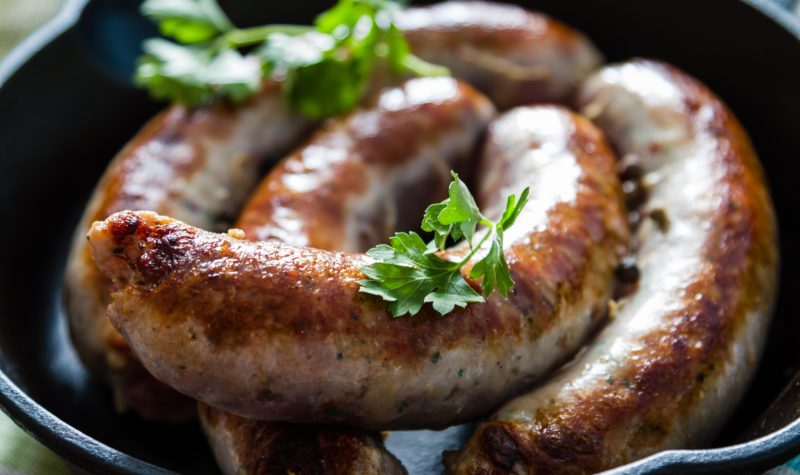Clean meat – the future of our food?

As the world wrestles with the issue of climate change, the topic of clean meat and its potential to reduce carbon emissions while making us healthier at the same time has come into sharp focus. Laura Turner of Agronomics investigates.
A couple of weeks ago, I graduated from University of Oxford having received my Masters of Chemistry degree. It was a delightful occasion; however, the weather predominated with blazing temperatures of 38 ℃ on that day. Quite unpleasant when in a thick black gown. As a Brit who is happy with lowish temperatures, I am relieved London has returned to the standard low 20s. However, what concerns us all is that temperatures recorded in mainland Europe have been at their all-time highest, fuelling the ever-growing concerns over climate change.
| Master Investor Magazine
Never miss an issue of Master Investor Magazine – sign-up now for free! |
A key player in climate change is undoubtedly large-scale arable farming and livestock production that has led to mass deforestation, specifically in Brazil and Latin America, to feed the growing global population. Estimates of population growth predict that by 2050 our population will number 9.8 billion, up from the current 7.7 billion. With this comes a serious and immediate requirement to provide protein and specifically meat to the increasingly affluent developing world.
Meat consumption in China has been growing rapidly for years, while increased demand for pork has left Brazilian farmers supplying soybean struggling to keep up. Chinese taste for beef has also been on the rise, with total consumption at 8.1 million tonnes for 2019, up 4% from 2018. As demand continues to outstrip supply, leading to sustained high prices – not to mention the continual issues of swine flu with pig raising – it is evident that an alternative approach needs to be implemented to support our population demands.
This is where clean meat comes into play. For those unfamiliar, clean meat is meat grown in vitro, following a harmless biopsy – a small sample of stem cells extracted from an animal of choice. The animal could be anything from a cow, pig, chicken, fish or crustacean. The stem cells, so called mytosatellites if they are muscular, are subsequently placed under the appropriate growth conditions in order to proliferate and differentiate into muscle cells, thus forming cultivated meat.
This process hugely disrupts the meat supply chain. For example, from just one cow-cell sample, approximately 800 million strands of muscle tissue can be grown, enough to make many, many beef burgers. This is a potentially viable solution to meet food demand as well as combating numerous issues with current food supply chains. Statistics from the Good Food Institute (GFI), a non-profit dedicated to sustainable food supply, states that clean beef production uses 95% less land and could lead to an 80% (approx.) reduction in greenhouse gas emissions.
According to PETA, it takes the equivalent of 50 bathtubs of water to produce just one steak by conventional farming processes. Livestock production accounted for 15% of the global anthropogenic greenhouse gas emissions in 2018. That is a lot of input required for a product that could be replicated in taste and texture by a less demanding process.
Last month, I had the pleasure of attending the New Harvest conference on Cellular Agriculture in Boston (which was just as hot as graduation day in Oxford), with Anthony Chow representing Agronomics (LON:ANIC). It proved to be a very exciting weekend, and one that highlighted how companies in the space will be able to scale up their production lines using bioreactors not dissimilar to fermenters for dairy, to drive down costs. The $280,000 clean meat beef burger of 2012 created by Mark Post, now co-founder of Mosa Meat, could be down in price to just $10 in a few years.
Global Leaders
BlueNalu, based in San Diego, CA, aims to be the global leader in cellular aquaculture – that being fish grown from a lab. This addresses the detrimental effects of the fish industry, such as overfishing and bycatch, which lead to a depletion in fish stocks. Imagine if Atlantic cod could be eaten guilt free? Not to mention, the numerous reports of microplastics contamination and toxic bioaccumulation such as Mercury. With a lab alternative, pregnant women would not have to be concerned of their fish intake for fears of toxins penetrating the blood-brain barrier and impacting a child’s cerebral development.
A recent investment by Agronomics is New Age Meats, a Silicon Valley based clean meat company focusing on pork. They carried out a prototype tasting of lab-grown sausage for 40 people back in 2018, with the meat being described as ‘smoky and savoury’ – the first lab-grown meat to contain both fat and muscle cells.
As far as I am aware, Agronomics is the only vehicle allowing the public to engage in the alternative protein space, aside from Beyond Meat (NASDAQ:BYND). Beyond Meat is an American plant-based burger company. The massive surge in Beyond Meat’s shares post IPO (10 May) showcases the buzz around this area. However, not only is this unicorn having success; its private competitor, Impossible Foods, recently had its heme protein acquire regulatory approval by the FDA, and shortly after, Burger King announced the Impossible Whopper in every American store from 8 August.
Both Impossible Foods and Beyond Meat products utilise alternative proteins – either pea or soy as substitutes for real meat. This has caught the attention of many vegans and vegetarians across the world, but more importantly, also the flexitarian and omnivore. Barclays estimates the alternative proteins market to be worth $140 billion by 2029; Bernstein has estimated it will be $40.5 billion – whatever the market size ends up, it is likely to be very high.
Next month, Jim Mellon and Anthony Chow will be attending the Good Food Conference in San Francisco, to further explore the opportunities for Agronomics. In the next couple of years, the progress in this field is certainly worth paying attention to.
Laura Turner
Laura Turner is an analyst at the AIM-listed investment company Agronomics, which targets life science investments such as the emerging alternative food technology. She graduated from the University of Oxford, with a Master’s degree in Chemistry.
Laura@agronomics.im
For twitter updates follow @AgronomicsLtd

There are two issues with the consumption of any meat products, one ethical the other environmental. The environmental issues focused on as regards red meat is the use of water and land and the clearing of forest. However there are many parts of the world, including the UK, where animals can be grazed naturally outside and the water falls from the heavens whether we want it or not! In fact it can be argued that the crop of much UK farmland is grass and cattle and sheep are an efficient way of turning it into protein. This means that “Peta” style calculations of water and land use are meaningless here.
I am concerned that the production of “fish” in this manner will lead to a reduced effort on cleaning up the oceans on the grounds that there are no longer human health issues from their current state.
The real problem is revealed in the article, we need to reduce the world’s population urgently before nature does it for us. In the meantime I am sure that this will all lead to a world where the rich continue to eat real meat and the poor eat substitutes which will become less and less like the real thing as they forget what its like.
The problem for me with this clean meat is that it does not seem natural and there are still unanswered questions. Cells do have consciousness of a sort. I dare say they are not conscious of being conscious, as we are, but consciousness is there. Have you ever wondered how a wound heals? Or marvelled at the way the damaged skin grows just as it was before? How do the cells “know” how to do this? At this point question the health of large clusters of cells cultivated in vitro arises. Do they not “feel” they still belong to body of the creature they came from? I do not know whether Oxford University has any answers to such questions but because of the doubts they raise I would eat clean meat even more grudgingly than I eat normal meat
surely a brain is required for consciousness or to feel?